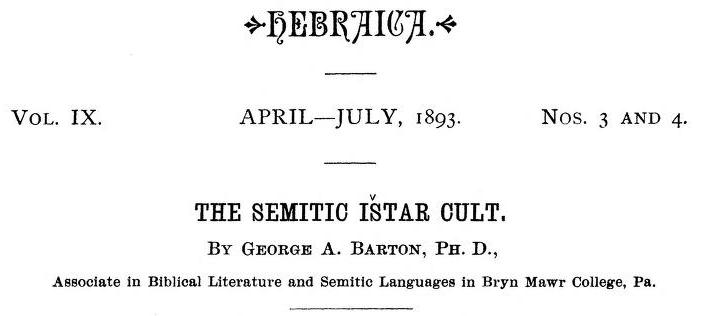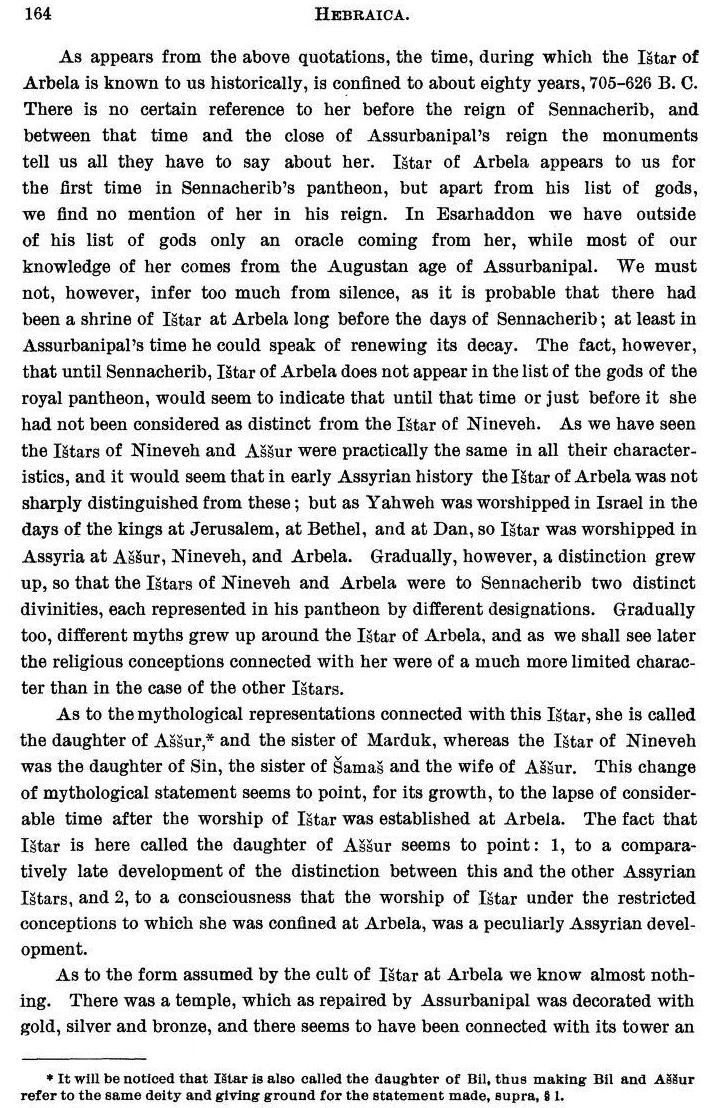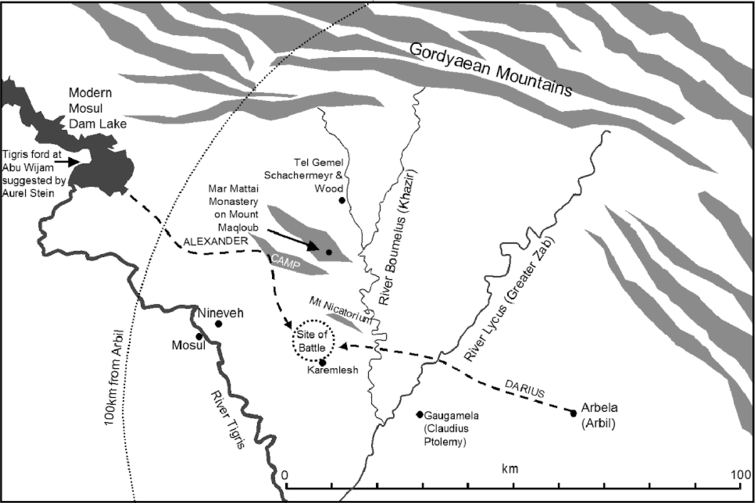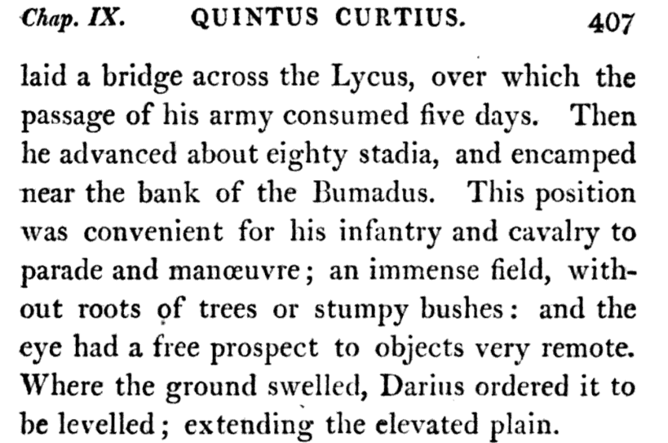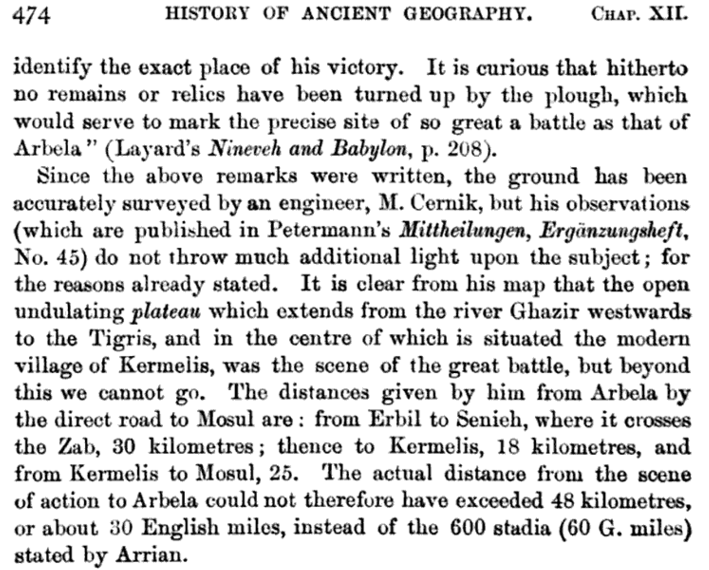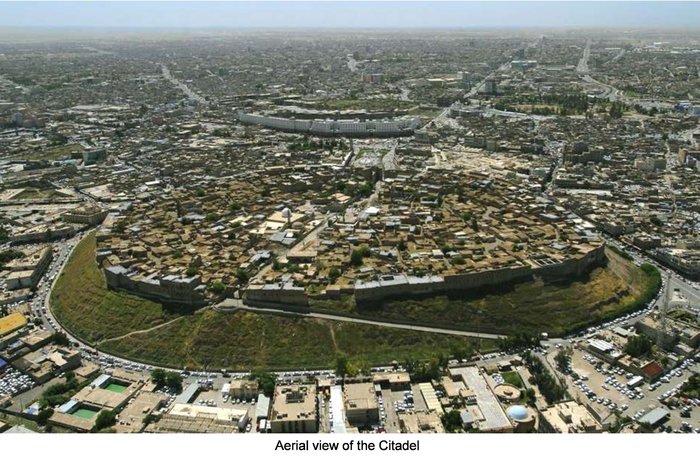|
Other Archaeological Sites / The Neolithic of the Levant (500 Page Book Online)
Pre-Historic Arbīl also spelled Irbīl or Erbil in North Eastern Iraq Etymology: The name Erbil was mentioned in Sumerian holy writings of third millennium BC as Urbilum -- Urbelum or Urbillum, which appears to originate from Arbilum. Later the Akkadians and Assyrians by a folk etymology rendered the name as arba'ū ilū to mean (four gods). The city became a centre for the worship of the Assyro-Babylonian goddess Ishtar. In classical times the city became known as Arbela (Greek Ἄρβηλα) from the Syriac language and Assyrian Neo-Aramaic form of the name. In Old Persian the city was called Arbairā. Today the modern Kurdish name of the city -- Hawlęr or Hewlęr -- appears to be a corruption of the name Arbel by a series of metatheses of consonants (WikiPedia). The ancient Assyrian city of Arab’ilu and a modern city in northeastern Iraq. It has been continuously inhabited for perhaps seven millennia and provides a living example of the formation of a tell (mound). Because it lies under the modern city there has been little excavation but it is known from texts that it had a temple dedicated to Ishtar and was a cult centre of importance, second only to Ashur itself. The earliest records referring to Arab’ilu belong to the late 3rd millennium BC (1).
(3) Research of the Arbil Citadel in Iraqi Kurdistan : First Season by Karel Novacek et al in Abstract: The north Mesopotamian town Arbil (ancient Urbilum -- Arba-ilu -- Arbela) is one of the oldest continuously inhabited cities in the world with the first signs of settlement dating back to 5,000 B.C. The city, along with Nineveh and Assur, reached the apex of its importance during the Neo-Assyrian period (10th-7th centuries BC) as a religious metropolis and royal residence, but maintained its central position in the region between the Great Zab and the Lesser Zab in later periods as well (3).
The Settlement Tell and 10 hectare Citadel of Arbil The tell and citadel (Qalat) of Arbil, capital of the Kurdish Autonomous Region in northern Iraq, is among the most important archaeological monuments of northern Mesopotamia with more than 7000 years continual settlement history. The settlement on the tell perhaps reaches back as far as the Neolithic, but clearly to the Chalcolithic cultures (circa 5000–3200 BC). The first historical records in which Arbil (Urbilum) figures relate to the person of Šulgi, king of the Third Dynasty of Ur (circa 2095–2048 BC), who ravaged the town in the 43rd year of his reign. In the second year of the king Amarsin (2046–2038) Arbil was annexed to the Ur III Empire. In the second millenium BC the city became a part of Assyria and reached the apex of its importance during the Neo-Assyrian period (10th–7th centuries BC) when as Arba-ilu (“City of the Four Gods”) it was a religious metropolis, centre of the cult of Ištar of Arbela and a royal residence known to have been used by King Assurbanipal (669–627 BC). This king renovated the Ištar temple and city walls; the important oracle and astronomic observatory connected with the temple was mentioned many times before during the reign of his predecessors (3).
During the reign of Sennacherib chronic problems with water supply were resolved by the building of a 22 km long subterranean canal from the Bastura tributary. After the destruction of Assyria in 612 BC the city came under the control of the Medes, then the Persians and afterwards the Greeks after the famous Battle of Gaugamela (mislabelled the Battle of Arbela) in 331 BC. After the death of Alexander the Great in 323 BCE Arbela became part of the Hellenistic Seleucid Empire (312 BC to 63 BC). During the Parthian period (126 BC – 226 AD) Arbil (Arbira) became the administrative centre of the Kingdom of Hidyab and one of the earliest and most important centres of Christianity around the Tigris ... In 642 northern Mesopotamia was conquered by the Muslims and the function of regional centre shifted to Mosul (3).
(2) Dictionary of Greek and Roman Geography --- William Smith Editor (1854) ARBE´LA: a town of eastern Adiabene, one of the provinces of Assyria, between the Lycus (the greater Záb) and the Caprus (the lesser Záb). Its present name is Arbil. Strabo states that it was in Aθurā (Athura: Achaemenid Assyria -- Assyria Babylonia) and belonged to Babylonia. Arbela has been celebrated as the scene of the last conflict between Dareius and Alexander the Great. The battle however really took place near the village of Gaugamela ( “the inn for camels” ) on the banks of the Bumodus, a tributary of the Lycus. Dareius left his baggage and treasures at Arbela when he advanced to meet Alexander (2). Strabo: Geography BOOK XVI 16.1.3 In Aturia is situated Gaugamela, a village where Darius was defeated and lost his kingdom. This place is remarkable for its name, which when interpreted signifies the "inn for camels". Darius, the son of Hystaspes, gave it this name and assigned (the revenues of) the place for the maintenance of camels, which had undergone the greatest possible labour and fatigue in the journey through the deserts of Scythia when carrying baggage and provision for the king. The Macedonians, observing that this was [just] a village, but Arbela a considerable settlement (founded as it is said by Arbelus son of Athmoneus), reported that the battle was fought and the victory obtained near Arbela, which account was transmitted to historians.
(E) The History of the Life and Reign of Alexander the Great --- Volume 1 by Quintus Curtius Rufus (1809) 34. DARIUS having ascertained that Alexander had turned aside into Africa, deliberated whether he should remain on the borders of Mesopotamia or retire farther into his dominions. He was persuaded that the remote provinces would be excited by his presence to engage in the war with vivacity; which under the satraps [governors of the provinces of the ancient Median and Achaemenid Empires] were slow in arming. But fame had circulated by convenient agents that Alexander would strike [Darius] with all his forces into whatever region he might remove; not ignorant of the invader’s invincible perseverance, he therefore directed levies [enlisted troops] from countries far distant to assemble at Babylon. The Bactrians -- Scythians and Indians repaired thither; and with these the other nations mustered their proportion of troops. 35. His army thus constituted and equipped, Darius marched from Babylon. On his right flowed the noble Tigris ; and the Euphrates covered his left. His forces filled the plains of Mesopotamia. Diodorus Siculus: Library of History 17.53 [3] Darius kept the Tigris on the right of his route and the Euphrates on the left and proceeded through a rich country capable of furnishing ample fodder for the animals and food enough for so many soldiers. [4] He had in mind to deploy for battle in the vicinity of Nineveh, since the plains there were well suited to his purpose and afforded ample manoeuvre room for the huge forces at his disposal. Pitching camp at a village named Arbela he drilled his troops daily and made them well disciplined by continued training and practice. Having at length resolved to meet his enemy, Darius left the greater part of his baggage and provisions at Arbela and threw a bridge over the Greater Zab by which his army was five days defiling. From the passage of the bridge he marched on eighty stadia and encamped on the tributary Bumadus (called Ghasir in the 19th century or modern Khazir) at a village called Gaugamela. After the battle Darius managed to escape and return to Arbela; then leaving his own chariot and much treasure in the city he fled to Ecbatana. Alexander awarded the satrapy of Arbelites (territories of) to his general Amphimachus.
(1) Macmillan Dictionary of Archaeology edited by Ruth Whitehouse (1983)
(2) Dictionary of Greek and Roman Geography --- William Smith Editor (1854)
(3) Research of the Arbil Citadel in Iraqi Kurdistan : First Season by Karel Novacek et al in
(A) Erbil --- WikiPedia
(B) ICOMOS report for the World Heritage Committee --- Evaluations of Nominations of Cultural and Mixed Properties --- Erbil Citadel -- Pages 79-88 (2014)
(C) The Semitic Ištar Cult by George Barton in Hebraica --- Volume 9 Pages 131–165 (1893)
(D) A History of Ancient Geography Among the Greeks and Romans --- Volume 1 by Sir Edward Herbert Bunbury (1879)
(E) The History of the Life and Reign of Alexander the Great --- Volume 1 by Quintus Curtius Rufus (1809)
|

